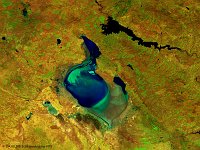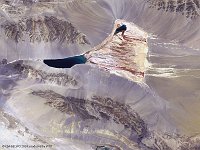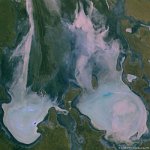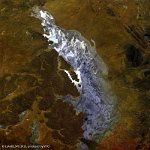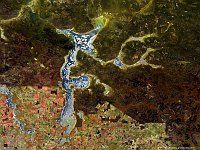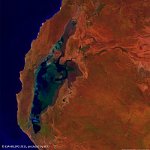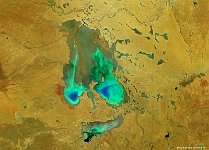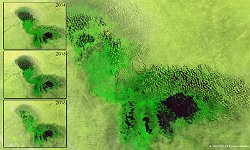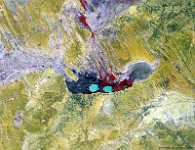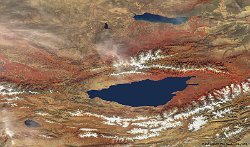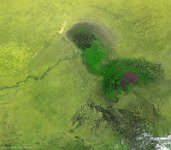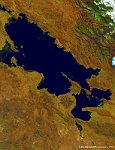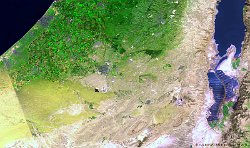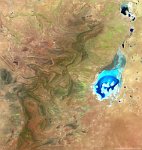36 / 52
Lake Moore, Australia
The 100 m false-colour image of 16 June 2015 shows us Lake Moore, an endorheic salt lake in the west of the Australian state of Western Australia which is dry most of the year.
On this PROBA-V image one can clearly see the distinction between the untouched Karroun Hill Nature reserve in the northern areas versus the man-made agricultural fields in the southern areas. The reserve is identified as an Important Bird Area as it support populations of the vulnerable malleefowl, regent parrots, rufous treecreepers and western yellow robins.
Date: 16/06/2015
Resolution: 100m
